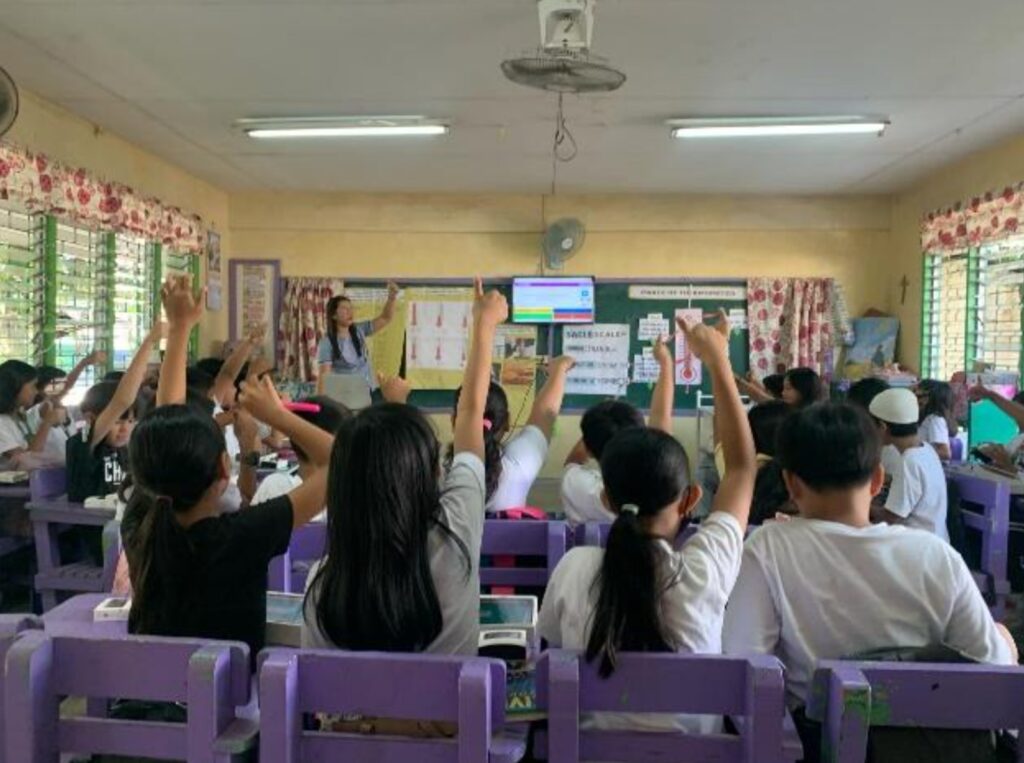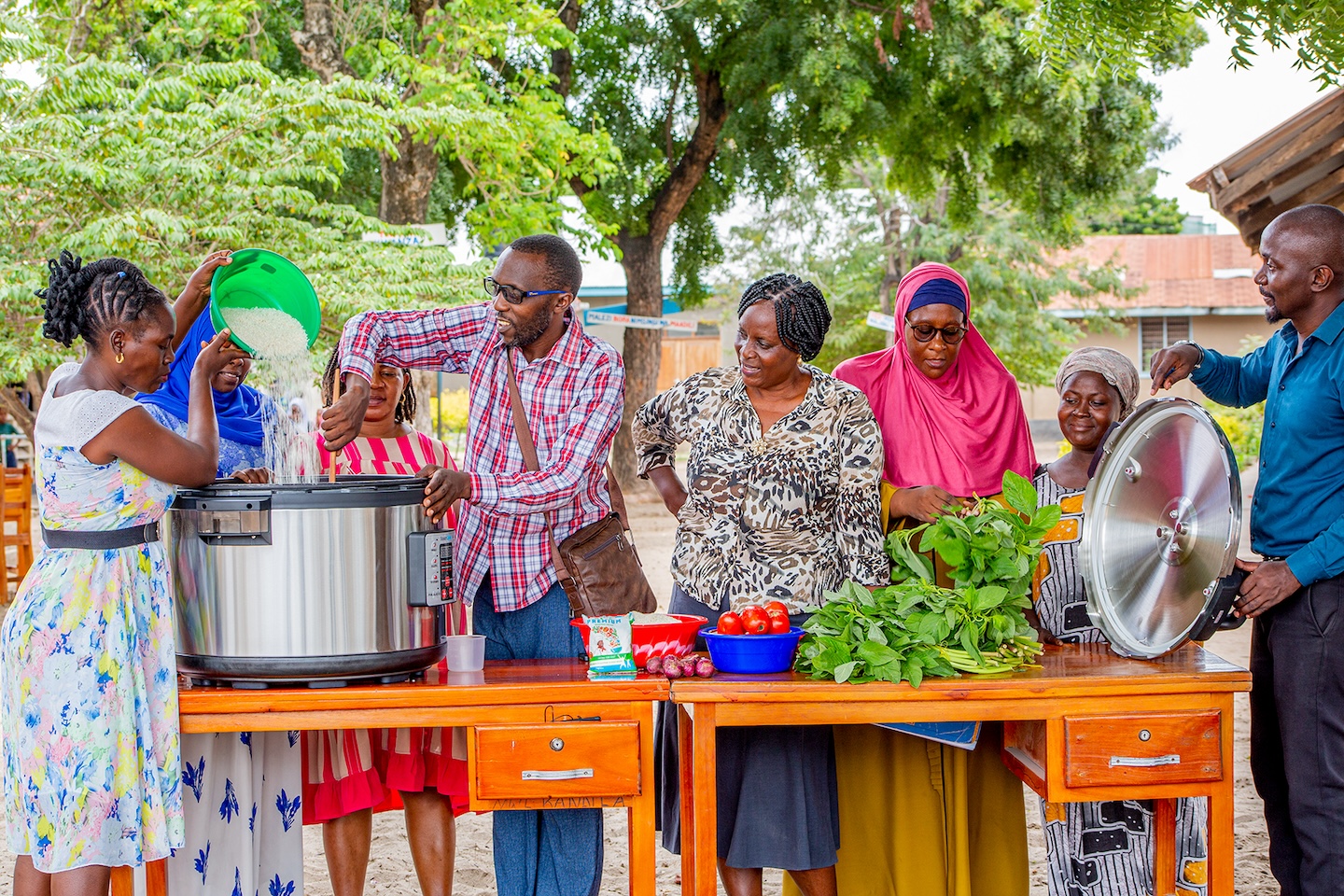HTHT Approach to Learning: Adaptive, Personalized, and Data-Driven
Across Cambodia and the Philippines, classrooms are undergoing a quiet but profound transformation. Traditional teaching methods, often relying on standardized, one-size-fits-all instruction, are being replaced with an adaptive, learner-centered approach. Through the High Touch, High Tech for All (HTHT) initiative, students are now experiencing math in ways that meet them where they are, helping struggling learners catch up while allowing advanced students to accelerate at their own pace.
With pilot implementations in 9 schools in Cambodia, reaching 2,252 students and 13 teachers, and 9 schools in the Philippines, reaching 1,369 students and 27 teachers, HTHT is demonstrating how technology-enhanced, data-driven teaching can reshape classrooms and elevate learning outcomes.
The Challenge: Breaking Free from the One-Size-Fits-All Model
For decades, classrooms have followed a standardized model of math instruction, leaving many students either overwhelmed or under-challenged. Teachers, though deeply committed, often lack the resources and flexibility to tailor instruction to individual student needs. As a result, many learners disengage, struggling in silence or failing to reach their full potential.
This is where HTHT steps in, providing teachers with tools and strategies (High Tech) that allow them to identify learning gaps and respond with targeted interventions (High Touch).
Our implementation partners, Teach For Cambodia (TFC) in Cambodia and Ayala Foundation Inc. (AFI) in the Philippines, are instrumental in bringing HTHT to life within their communities by integrating AI-powered platforms like Maths Pathway (Cambodia) and Khan Academy (Philippines) to equip educators with real-time data on student performance. Instead of rigid, one-size-fits-all lessons, students progress at their own pace, receiving personalized support when needed and additional challenges when ready.

Students in Cambodia engage with AI-powered math lessons, progressing at their own pace. The HTHT model provides personalized learning pathways, helping students build confidence in their skills.
Key elements of HTHT in Cambodia and the Philippines include:
- Diagnostics & Data-Driven Teaching. Teachers analyze student performance data to create customized learning plans.
- Targeted Mini-Lessons & Interventions. Instead of full-class lectures, teachers form small groups, ensuring focused instruction for those who need it most.
- Flexible Teaching Models. To overcome device shortages, educators in Cambodia are implementing rotational models, maximizing learning opportunities for all students.
- Professional Learning Communities (PLCs). Teachers in Cambodia and the Philippines are coaching one another, building a network of peer learning and instructional innovation.

Students actively engage in an HTHT classroom in the Philippines. The program drives classroom transformation by integrating
AI-enabled personalized content, providing devices and connectivity, and fostering continuous teacher development, ensuring that all learners can succeed at their own pace.
Early Signs of Impact: Empowered Teachers, Engaged Students
While still in its early stages, HTHT pilot in Cambodia and the Philippines in the 2024 – 2025 school year is already showing signs of meaningful change. An ongoing impact evaluation is measuring learning outcomes and comparing performance between HTHT and control schools to assess the program’s effectiveness.
Teachers Feel More Equipped
Educators are embracing data-driven instruction, using insights from the technology platform to adjust their lesson plans, modify teaching strategies, and provide targeted support to students who need extra help, ensuring that instruction is continuously adapted to student progress in real time.
- In the Philippines, teachers have reported that Khan Academy’s real-time tracking allows them to see exactly where students struggle and adjust their interventions accordingly. Similarly, in Cambodia, educators highlight that before HTHT, tracking student progress was challenging, but now they can quickly adapt their instruction to match students’ learning needs. The ability to pinpoint gaps and provide targeted support has improved teachers’ confidence in their ability to help all students succeed.
- An elementary math Teacher from the Philippines said that “Teachers spend less time on preparation, and students understand lessons better through hands-on learning. The program provides step-by-step guidance on finding the correct answers, helping students address their questions. Every Thursday, students are excited for Khan Academy Day, and overall, the approach enhances their mastery of the lesson.”

A teacher in the Philippines leverages real-time student data from Khan Academy to tailor instruction. AFI’s CENTEX Digital Education – HTHT enables educators to identify learning gaps and provide targeted support, ensuring that every student receives the help they need.
Increased Attendance and Stronger Student Engagement
Learners are more confident and motivated, actively participating in discussions and problem-solving.In Cambodia, teachers have observed that students in HTHT classrooms are more willing to seek help, reflect on their learning, and re-engage with difficult concepts. Early observations also suggest increased attendance and punctuality in some HTHT schools, with teachers noting that previously disengaged students are now arriving on time and participating more actively.
- In the words of one Cambodian teacher, “ At the beginning of the year, my students were among the lowest-performing compared to other classrooms. Many skipped classes or were disengaged. But after joining the HTHT classroom, I noticed a promising shift—students now attend regularly, arrive on time, and actively participate. They are more confident in answering questions and even helping their classmates.”
- A principal from the Philippines also witnessed increased engagement. “I have seen how CENTEX Digital Education – HTHT made a significant difference in bridging the gap between technology and human interaction, creating a learning environment that is both engaging and effective.
More Inclusive Learning
Students who once struggled with math are now receiving personalized support, bridging critical gaps in their understanding.In HTHT classrooms, technology provides visual representation, audio cues, and interactive exercises, making abstract math concepts more concrete, aiding students in comprehension and retention.
- Teachers report that before HTHT, many students found math difficult due to the absence of visual and interactive elements in traditional textbooks. Now, with digital tools, students can better grasp key concepts, receive instant feedback on their math exercises, and make multiple attempts at questions tailored to their level of conceptual understanding. This adaptive approach helps reinforce learning, allowing students to identify mistakes, refine their thinking, and develop a stronger foundation in mathematical concepts.
- A student from an elementary school in the Philippines reflected that “The lesson is easier to understand, and if a mistake is made, students have the chance to retry their answers until they get the correct one, as there are step-by-step guides on how to arrive at the right answer.”
- A student in Cambodia also shared, “I enjoy learning math now because the pictures help me understand concepts better, and I feel motivated when I can answer the questions.” This reflects how visual elements in digital tools make abstract math concepts more accessible to all learners.
- As another teacher in Cambodia observed “I noticed that the HTHT model has accelerated my students’ learning. The technology introduces the maths topic in a way that allows students to explore concepts independently. By the time I deliver whole-class instruction, many students are already familiar with the material, making them more confident in answering questions and even supporting their classmates.” The HTHT approach not only enhances their understanding but also fosters a more collaborative learning environment where students take an active role in helping one another.
- A teacher from the Philippines echoed this sentiment, “I think HTHT is a great help for the children. I have seen their improvement since they started using Khan Academy. I also think that there is still a lot I want to learn about HTHT.”
Strengthening Partnerships for Greater Impact
The High Touch High Tech for All (HTHT) initiative, implemented by the Learning Generation Initiative (LGI) at EDC, is on its way to proving that education can be transformative when it is personalized, engaging, and tailored to meet students where they are. This progress has been made possible through the generous support of Equinix Foundation and Philanthropy Asia Alliance (PAA), whose commitment to digital inclusion and educational innovation has been instrumental in driving these pilots forward.
HTHT’s impact so far highlights the critical need for collaboration among all stakeholders, including educators, policymakers, private sector partners, and local communities, to create sustainable change in education. As Elmer Soria, Municipal Mayor of San Marcelino, Zambales, in the Philippines affirms:
“This initiative is a powerful testament to what can be achieved when institutions, local governments, and communities unite toward a shared goal of educational excellence.”



